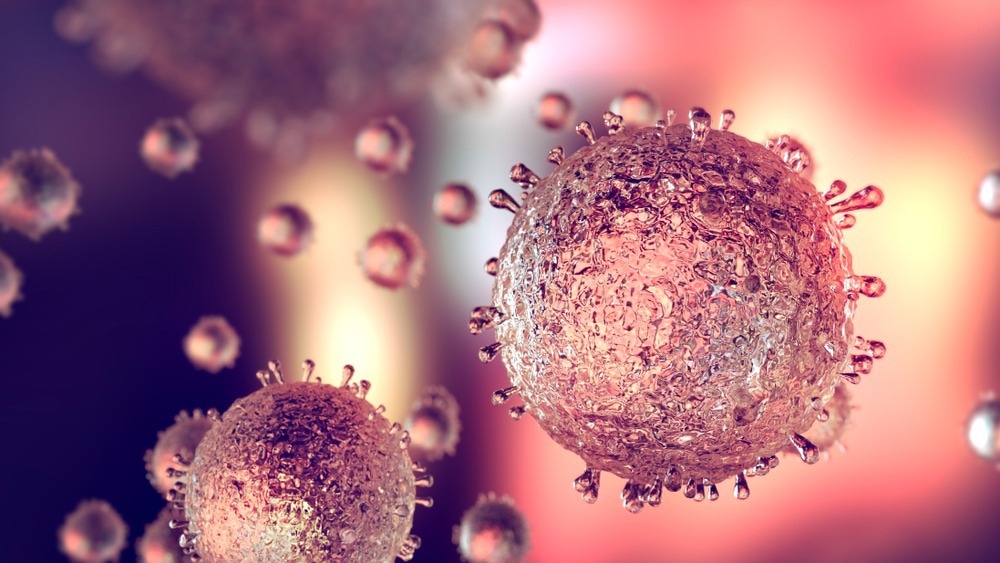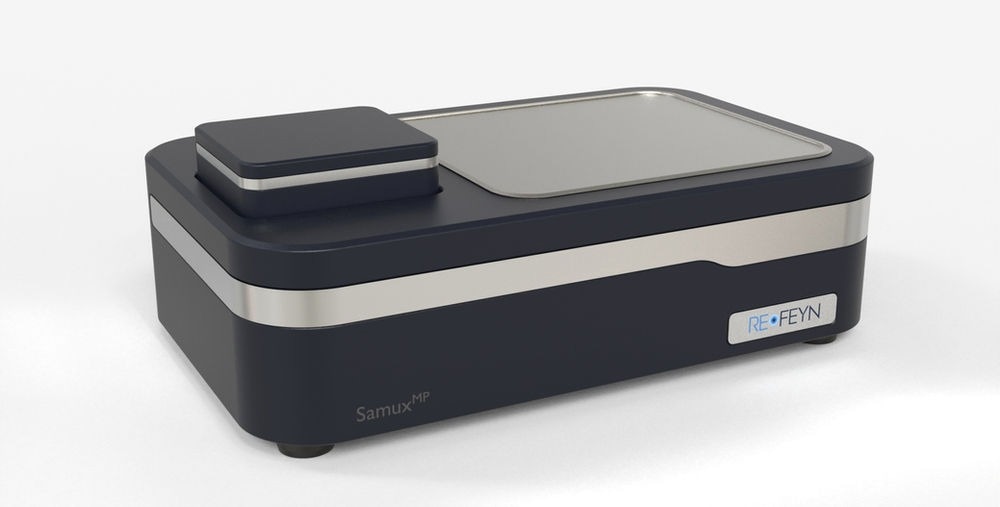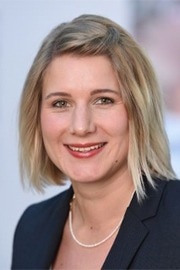Sponsored Content by RefeynJan 17 2023
In this interview, we speak to Svea Cheeseman at Refeyn about their SamuxMP products used for the analysis of adeno-associated viruses (AAV) capsids as well as the role automation will play in accelerating new research.
Please can you introduce yourself and tell us about your role at Refeyn?
I am a scientist by training and hold a PhD in single-molecule biophysics. Throughout my education and professional life, I have been working with analytics for biomolecules and process analytical technologies (PAT) for biopharmaceutical applications.
When I learned about Refeyn and the potential of their technology, mass photometry, to provide useful and unique bioanalytics solutions, I knew I wanted to work here. I am currently the Director of Product Management for Cell and Gene Therapy at Refeyn.
In this role, I am responsible for all current and future products for use in the development and manufacturing of such therapies. This includes our SamuxMP product range, which is optimized for adeno-associated viruses (AAVs), and our second-generation mass photometer, the TwoMP, which can be used to analyze RNA and DNA payloads.
Towards the end of 2023, we intend to bring a novel mass photometer to the market that measures larger viruses and lipid nanoparticles (LNPs).
Refeyn was spun out of Oxford University in 2018, founded on the belief that 'broadening the availability of mass photometry would accelerate science.' As a European life sciences company headquartered in a scientific hotspot, what role do you believe Europe plays in research?
The life sciences research community is incredibly networked, both in academia and industry. This network covers Europe and elsewhere. One example from Refeyn that illustrates this is that we showcased our technology first at the annual meeting of the Biophysical Society in San Francisco but then shipped our first instrument to Germany. Within the first 12 months, we had instruments in the US, Canada, and Europe, plus also in China and Australia.
Europe is home to many of our customers. It has played and will continue to play a central role in the research activities in our target markets – but always in collaboration with other regions and with a lot of mobility of researchers across regions.
Our industrial customers place our instruments in facilities on different continents to ensure consistency in their processes. Today, research is international – and we set up Refeyn accordingly, aiming to support those interested in our technology regardless of location.
Mass Photometry Explained: How It Works & Why It Matters
Refeyn is focused on mass photometry, a new revolutionary method that analyzes molecules. Can you tell us more about how mass photometry works and its potential in bioanalytics?
Mass photometry builds on the principles of two optical techniques: interference reflection microscopy and interferometric scattering microscopy. It combines carefully developed strategies in illumination, spatial filtering, and image analysis to detect the tiny amount of light scattered by single molecules. This scattering scales linearly with a molecule's volume and refractive index, which makes it possible for mass photometry to weigh single molecules with light. For proteins, for example, their optical properties and density vary by just a few percent, so their scattering signal is directly proportional to sequence mass which means that mass photometry can measure the mass of single proteins with high accuracy and over a broad mass range. The correlation of the scattering signal with mass holds true for a variety of biomolecules (including glycoproteins, nucleic acids, and lipids), making mass photometry a universal analysis tool for biomolecules in solution.
Each mass photometry measurement takes just a few minutes to produce the mass distribution and relative concentration of all the species in a sample - accelerating a variety of experimental workflows, including analyses of sample purity and homogeneity (which can be useful during expression and purification), protein oligomerization, biomolecular interactions (including the quantification of high-affinity interactions), and the assembly dynamics of macromolecular complexes.
Mass photometry is an ideal addition to existing technologies because it can do all this, and the results are quantitative and easy to interpret – so it can readily provide unique insights or orthogonal confirmation where needed.
What are some of the benefits of using mass photometry compared to other analytical methods available?
There are quite a few different benefits. First of all, mass photometry measurements are done in solution, in a wide variety of buffers, which means they provide information about the sample in its native state. In addition, mass photometry does not require any labels, so that you can analyze the unperturbed function of the target molecule. The fact that you don't need to label reduces sample prep time. And mass photometry is a very quick technique, taking just minutes for one measurement.
But probably the most significant benefit of mass photometry is that it analyses samples molecule by molecule, giving unique information that is only accessible on the single-molecule level. Let's take protein-protein interactions as an example – suppose you want to analyze the binding of protein A to protein B. But if protein A exists in an equilibrium of monomers and dimers, mass photometry can distinguish if the monomer of A binds to protein B, the dimer binds, or both. Ensemble techniques, on the other hand, only report the average binding over monomers and dimers – which can be extremely misleading if, for example, only the dimer shows high-affinity binding but is the less abundant species in those measurement conditions.
Mass photometry generally measures a very generic property of the sample – the relative abundance and mass of each species in the sample. From that read-out, you can build a variety of assays – from simple sample quality control (assessing purity and homogeneity) to complex and quantitative interaction studies. But all these assays will still share the hallmarks of mass photometry – quick results with minimal sample consumption.
One of your products, the SamuxMP, is an essential analytical tool for the analysis of adeno-associated viruses (AAV) capsids. How does the SamuxMP characterize AAV?
The analytical method used in the SamuxMP product line is mass photometry, which basically weighs AAV particles with light. I explained above how, in a nutshell, mass photometry determines the mass of single molecules by measuring the light they scatter. The same principle applies to AAV: the amount of light scattered by an AAV capsid scales with its mass. Hence, the output of the SamuxMP is a mass histogram of the AAVs in the sample. The mass of AAV capsids depends on the amount of DNA they are carrying. Empty AAVs typically have a mass of around 3.7 MDa; loaded AAVs are typically 1.3 MDa heavier, depending on the amount of DNA loaded. Mass photometry can easily distinguish these two populations, even though the AAVs are identical in size. Since mass photometry has single-particle resolution and the SamuxMP is optimized for the mass range of AAVs (3-6MDa), one can also resolve partially filled and overfilled AAVs. We are currently looking into quantifying aggregates too. One last feature worth mentioning is that the system is not selective for AAVs; hence it can also detect contaminants that might remain after purification.

Image Credit: Jake Pixo/Shutterstock.com
You are participating in a live webinar titled 'Demonstrating Analytical Comparability in Analytical Development' on the 14th of February. Please can you give an overview of what will be discussed in this webinar and the importance of providing these resources to customers?
This webinar will be given together with Santoshkumar Khatwani, Director of Analytical Development at Sangamo Therapeutics, focusing on challenges in analytical comparability for gene therapy products. Santosh will present his work on establishing an analytical workflow for gene therapy products, including their experience with mass photometry, and I will explain how the technology works and why it is so well suited to AAV analysis.
While mass photometry is an extremely powerful tool for characterizing AAVs with rapid uptake by major AAV researchers and manufacturers, it is still a new technology to the market. I will present data from the SamuxMP that provides clear evidence to address the most common questions we are asked, so I will cover sample requirements, benchmarking results, resolution for partially filled AAVs, and serotype agnosticity.
I will also give an overview of new products in the SamuxMP product line that will be available this year: The SamuxMP Auto, which is an automated mass photometer, as well as GMP-compliant software for using the SamuxMP and SamuxMP Auto in production and QC environments.
Can you tell us more about the SamuxMP Auto and why automating your technology will help to accelerate research?
The SamuxMP Auto can autonomously measure up to 24 samples from a 96-well plate. This automation frees up operator time and reduces the impact of manual handling and different operators, leading to higher data reproducibility.
We anticipate that this product will be especially useful for process development applications, where screening often results in many samples that require analysis. It will also facilitate the QC requirement that every sample be measured in triplicate. We believe that when this technology is adopted for applications beyond lab research, it will add a lot of value.
How does the SamuxMP compare to the SamuxMP Auto?
Both instruments are based on the manual SamuxMP system. In the SamuxMP Auto, the SamuxMP is permanently integrated inside a laser-safe box with a liquid-handling robot that pipets the samples for measurement. The analysis software also has additional capabilities to handle many measurements simultaneously.
Because the design is modular, existing customers of the SamuxMP can retrofit their system for automation. Also, the GMP-compliant software available in H2/2023 will be retrofittable for all SamuxMP and SamuxMP Auto customers.

Image Credit: Refeyn
With new exciting technologies such as mass photometry allowing scientists to answer their research questions quickly, scientists can focus more on innovation. What benefits does this have for scientific research, and are you hopeful that we will see more discoveries being made due to the availability of new products, such as the SamuxMP product line?
Mass photometry offers a new assay format that provides unique single-molecule information. This meets a growing appreciation that biomolecular interactions are much more complex than suggested by previous assays that were mainly aimed at proving one-to-one interaction models. To elucidate the activity of oligomeric proteins, protein complexes, or protein-DNA/protein-RNA assemblies, technologies showing the activity of individual species and the influence of individual building blocks on such activity are crucial.
We have already seen some exciting contributions from mass photometry to the understanding of complex interactions in recent years – and there will be much more to come.
Similarly, mass photometry offers particular advantages for the analysis of AAVs because it can assess loading rate and purity with very little sample in less than five minutes. This enables the monitoring and optimization of AAV processes very early in the value chain when traditional methods are not applicable.
We believe that mass photometry can therefore contribute to better and safer AAV products, as well as shorter development timelines. Indeed, many customers are positively surprised when they see their samples on the SamuxMP for the first time – when, for example, it shows a large, partially filled AAV population in a product that showed high immunogenicity in animal studies.
As well as continuing to push the boundaries of single-particle analysis, you always aim to meet the needs of scientists and inspire new ideas. How do you do this, and why is it important for technology to evolve as science does?
Scientific progress has always been a synergy between scientific discovery posing new questions and new technologies providing new answers. We believe that mass photometry has a huge potential to enable and accelerate biomolecular research – we are currently scratching the surface of what will be possible with this technology going forward. The unique capability of fast and easy mass analysis at the single-molecule level lends itself to many applications, including interaction studies, purity assessment, and degradation studies.
At the same time, mass photometry is not limited to proteins (or AAVs). Nucleic acids, polymers, and macromolecules can be measured as well. We will continue to push the capabilities of the technology to ensure that we can provide more comprehensive answers to the beautiful complexity of biomolecular activity and function.
What is next for Refeyn? Are you involved in any exciting upcoming projects?
There will be many exciting new products and features in 2023! For my area of expertise, the cell and gene therapy sector, we will have the automation of mass photometry for AAVs with the SamuxMP Auto and instruments supporting GMP-compliant environments.
Also on the horizon, we plan to introduce a new instrument for the analysis of bigger viruses and lipid nanoparticles towards the end of the year.
Where can readers find more information?
The upcoming webinar mentioned above: https://biopharmawebinars.com/webinars/demonstrating-analytical-comparability-in-analytical-development/
Refeyn's brochure on AAV analytics with mass photometry: https://refeyn.com/aav-vector-analytics
SamuxMP product website: https://www.refeyn.com/samuxmp-mass-photometer
About Svea Cheeseman
Svea Cheeseman is the Director of Product Management for Cell and Gene Therapy at Refeyn, responsible for all current and future products targeted for the Biopharma industry.
She holds a PhD in single-molecule biophysics and has more than five years of experience in the Biopharma industry. She has a keen interest in pushing the boundaries of biomolecular analysis to eventually enable the real-time release of biomolecular drugs.